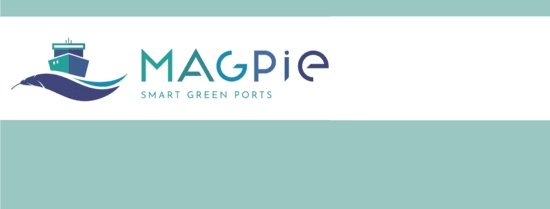As part of the EU MAGPIE Project, Erasmus UPT is pleased to present its second deliverable of Work Package 7, produced in partnership with TU Delft and EWI. The report, entitled ‘D7.2 Long list of Non-tech Solutions’, offers a structured identification of potential non-tech innovation that can be implemented to accelerate the implementation of zero-emission technological and logistical solutions at European ports.
The goal of WP7 within the MAGPIE project is to develop and demonstrate non-technological innovations that enable and accelerate the implementation of low or zero-emission technological and logistical solutions. D7.1 discusses the barriers to innovation, while this report addresses non-tech measurements to address these barriers. The technical innovations to address these barriers are the subject of the other MAGPIE WPs. This task is followed by a selection of 8 options (D7.3) relevant to address those barriers limiting the implementation of MAGPIE technical solutions. At the same time D7.4 will describe how to study the effectiveness of the measures and design optimal measures.
The goal of this report is to create and assess a long list of non-technological innovations. This list is a basis from which WP7 will derive and create non-technological innovations to deal with barriers that could hinder the implementation of solutions for the transition to zero emissions as developed and studied within MAGPIE. Using both a survey under the MAGPIE participants and a literature search, a collection of innovations was made. These were reviewed and resulted in a set of generic non-technological innovation concepts that will form the basis for the further analysis from which an eventual short list will be made of the most promising solutions.
The port ecosystem represents a cluster of emissions-producing activities of which transport and energy production are the most significant polluters. Though most of the transport related emissions occur outside the bounds of ports, ports themselves constitute a key nexus where emission reduction initiatives can be implemented in coordination with a large variety of stakeholders. This Port Nexus can be understood as a complex, ‘Mission-oriented Innovation System’ (MIS), as discussed in D7.1, with various stakeholders, elements, and internal functions that support innovation. Its raison d’être is to develop innovations geared towards achieving the “urgent societal goal” of a successful energy transition, and the efficacy of its internal functions determine the extent to which that goal is met.
With this function in mind, three non-technological solution ‘clusters’ are proposed, offering the necessary breadth of scope to tackle the innovation barriers identified in previous report:
- Policy solutions
- Business concepts
- Information Provision & Quality
Ascribed to these clusters is a list of solutions and measures from the aforementioned survey and literature search. It should be noted that the solution concepts should not be seen as individual innovations but as elements of such an innovation. In other words, a single innovation will consist of a combination of concepts interacting and supporting each other to achieve the desired effect. To give an example of this, the concept of benchmarking is almost always combined with an economical measure such as tariff reductions.

For more, download Report D7.2 on the long-list of solutions below!

